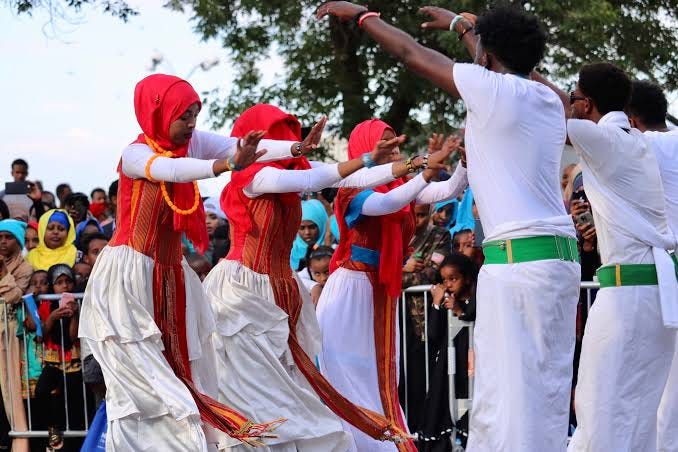Somali Culture
Background
Somalia is located in the Horn of Africa and shares borders with Ethiopia, Djibouti, and Kenya. Its long coastline along the Indian Ocean and the Gulf of Aden provides important maritime resources and trade opportunities. The hot and dry climate, along with rainy seasons, is crucial for agriculture and pastoralism.
Known as the land of ancient Punt, Somalia gained independence in 1960. The rich culture encompasses poetry, music, and dance. While the country faces challenges, its economy is growing, and communities are resilient.

cuisine
Somali cuisine is a diverse blend of influences from various cultures, known for its aromatic spices and fresh ingredients. Rice, such as “bariis iskukaris,” is common and is often served with meat, vegetables, or sauce. Popular breads include lahoh (a pancake-like bread) and malawah (a sweet crepe). The Italian influence is evident in pasta dishes like baasto, which is served with a spicy sauce.
Samosas, camel meat, and halwa (a sweet made from sugar, corn starch, and spices) are also well-known delicacies. Somalis often eat bananas alongside their meals, highlighting the unique character of the cuisine.

Dance
Somali cultural dances are an essential part of the country’s heritage, celebrating rich traditions and a diverse history. One of the most well-known dances is “dhaanto,” which originates from the pastoralist communities and features energetic, rhythmic movements, clapping, drumming, and singing. It is often performed during celebrations, such as weddings and festivals.
Another popular dance is “buraanbur,” performed by women at significant events, such as weddings. This dance is accompanied by poetic songs that praise the bride’s beauty and emphasize the community’s values and sense of belonging.

Clothing
Somali traditional clothing combines functionality with cultural significance. Men typically wear “macawis,” a sarong-like garment wrapped around the waist, paired with a simple shirt. Women often dress in “guntiino,” a long piece of fabric draped over the shoulder, or “dirac,” a light dress worn on special occasions. They also wear a hijab or “shaash,” which covers the head and reflects Islamic beliefs. The clothing often features intricate embroidery and vibrant patterns, showcasing Somali artistry. Together with dance and clothing, these traditions provide a glimpse into Somalia’s rich cultural heritage.

